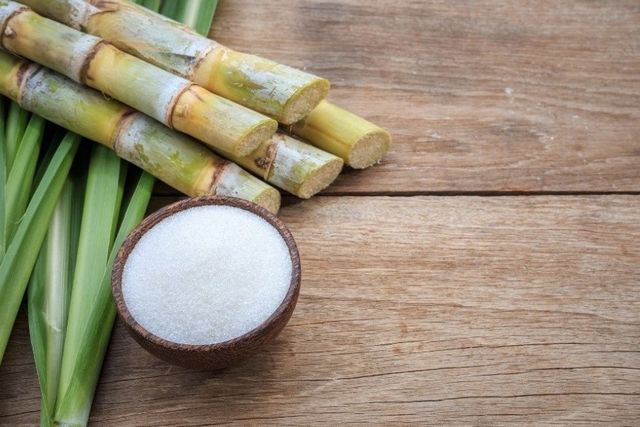Cane Sugar Processing Explained: What Takes Place Inside a Sugar Mill
Cane Sugar Processing Explained: What Takes Place Inside a Sugar Mill
Blog Article
An Extensive Guide to the Ecological Effect and Sustainability Practices in Walking Cane Sugar Processing
The ecological impact of walking stick sugar processing presents an intricate selection of challenges that warrant careful exam. From soil deterioration and too much water usage to the carbon footprint connected with growing and manufacturing, the consequences of typical techniques are far-ranging. What details methods can be carried out to strike a balance in between performance and environmental stewardship?
Summary of Cane Sugar Processing
Walking stick sugar handling includes a series of systematic actions that transform sugarcane into refined sugar. Originally, gathered sugarcane is transported to refining facilities, where it goes through cleaning up to remove dirt and particles. Following this, the walking cane is crushed to draw out juice, which is after that cleared up by removing contaminations with heating and the enhancement of lime.
The cleared up juice undergoes evaporation, where water is gotten rid of to concentrate the sugar material. This concentrated syrup is then taken shape with cooling, permitting sugar crystals to form. These crystals are separated from the continuing to be syrup utilizing centrifugation, resulting in raw sugar. To achieve refined sugar, the raw product undergoes more filtration procedures, which may consist of washing and filtering to get rid of remaining contaminations and shade.
The end product is after that dried out and packaged for distribution. Throughout this whole process, maintaining effectiveness and quality control is vital to make certain the sugar meets industry standards. Each action in walking cane sugar processing not only adds to the last product but likewise has effects for resource usage and waste generation, setting the stage for discussions on sustainability and ecological influences connected with sugar manufacturing.
Ecological Challenges of Manufacturing
The manufacturing of cane sugar offers a number of considerable ecological obstacles that warrant attention. One primary issue is the comprehensive use of agrochemicals, consisting of fertilizers and chemicals, which can cause soil deterioration, biodiversity loss, and contamination of regional water sources. The runoff from sugarcane fields commonly brings these chemicals into nearby ecological communities, interfering with aquatic life and influencing the health and wellness of areas reliant on these water bodies.
Another challenge is the high power consumption linked with sugarcane processing. The boiling and refining phases require considerable warmth, largely generated by shedding fossil fuels, contributing to greenhouse gas discharges. Additionally, the extensive land location required for sugarcane growing can bring about deforestation and habitat destruction, more intensifying environment modification and harmful wild animals.
Moreover, the labor methods in some regions increase moral problems, as employees might face inadequate working problems and poor wages. This circumstance usually continues a cycle of destitution in regional communities. Cane Sugar Processing. Dealing with these environmental obstacles is critical for developing more sustainable practices in walking stick sugar manufacturing, ultimately benefiting both the setting and the neighborhoods entailed in this market
Water and Land Usage Influence
Water sources and land application are crucial components in the cane sugar industry that substantially impact the atmosphere. The farming of sugarcane needs considerable water input, with price quotes recommending that it can consume as much as 2,000 litres of water per kilo of sugar produced. This extensive use water commonly visit site brings about depletion of local water sources, affecting not only the sugarcane vineyards but also bordering communities and neighborhoods that rely upon the exact same water sources for agriculture and residential usage.

In addition, land use for sugarcane growing can cause logging and the conversion of all-natural habitats right into monoculture plantations. This method diminishes biodiversity, interferes with local environments, and adds to soil destruction. The expansion of sugarcane fields frequently intrudes on useful farming land, creating competition for resources in between food and biofuel manufacturing.
Lasting techniques, such as enhancing watering techniques and executing plant turning, are vital to mitigate these influences. By adopting much more reliable water usage and land management strategies, the walking stick sugar industry can reduce its environmental footprint, ensuring an equilibrium in between farming productivity and environmental conservation.
Greenhouse Gas Emissions
Greenhouse gas exhausts stand for a significant environmental problem within the walking cane sugar processing industry, particularly as agricultural practices increase to fulfill worldwide need. The farming of sugarcane, a plant that flourishes in exotic environments, relies heavily on synthetic fertilizers and pesticides, which contribute to laughing gas emissions. In addition, land-use adjustments, including logging for new sugarcane ranches, release co2 stored in plants and dirt.
Throughout more processing, energy consumption is one more significant source of greenhouse gas discharges - Cane Sugar Processing. Many sugar mills make use of fossil fuels to power equipment and generate heat, causing substantial carbon footprints. In addition, the transportation of raw sugarcane and finished items adds layers of exhausts with fuel combustion in cars
The collective result of these exhausts intensifies environment change, posing dangers not just to the environment but likewise to the long-term stability of like this the market. Stakeholders should acknowledge the urgent demand for extensive techniques that attend to these discharges. This entails evaluating existing agricultural techniques, refining methods, and transportation systems to recognize locations for improvement and mitigation. Dealing with greenhouse gas emissions is vital for promoting a more lasting walking cane sugar industry in a changing environment.

Lasting Practices and Innovations
Sustainable techniques and technologies are increasingly important in the cane sugar processing market as stakeholders seek to reduce ecological impacts while preserving efficiency. One significant innovation is the execution of incorporated plant administration, which optimizes source use by incorporating dirt administration, parasite control, and plant turning techniques. This technique improves return while reducing chemical inputs and maintaining dirt wellness.
Moreover, the adoption of sustainable power resources, such as biomass from sugarcane deposits, has acquired grip - Cane Sugar Processing. By transforming waste products right into power, processing centers can decrease their dependence on fossil gas, thereby reducing greenhouse gas exhausts
Water administration techniques have actually also seen enhancements via the recycling and reusing of water in processing plants, dramatically reducing freshwater consumption. Advancements in technology, such as precision agriculture, allow farmers to check crop health and wellness and source use extra successfully, making sure sustainable cultivation practices.
Moreover, certification programs like Fair Trade and Jungle Alliance encourage ecologically responsible farming techniques and advertise social equity within the supply chain. By embracing these sustainable practices and developments, the cane sugar handling sector can improve its resilience and contribute favorably to environmental stewardship.
Verdict
The ecological impact of walking cane sugar handling offers significant obstacles, consisting of soil destruction, high water usage, and greenhouse gas exhausts, alongside ethical problems connected to labor methods. Attending to these concerns via sustainable methods, such as integrated plant management, renewable resource adoption, and water recycling, is necessary. By advertising socially fair and ecologically accountable methods in sugar manufacturing, the market can mitigate its unfavorable effects, making certain a much more lasting future for both environments and neighborhoods involved in this market.
Walking stick sugar processing includes a collection of organized steps that change sugarcane into refined sugar. Each step in walking cane sugar handling not only adds to the final product however additionally has effects for source usage and waste generation, establishing the stage for discussions on sustainability and environmental influences linked with sugar production.
Greenhouse gas emissions represent a substantial ecological problem within the cane sugar processing sector, especially as agricultural methods broaden to fulfill global need.Sustainable techniques and innovations are progressively essential in the walking cane sugar handling industry as stakeholders look for to lower environmental effects while preserving efficiency.The environmental effect of walking cane sugar handling provides significant obstacles, consisting of dirt destruction, high water usage, and greenhouse gas exhausts, alongside moral concerns related to labor practices.
Report this page